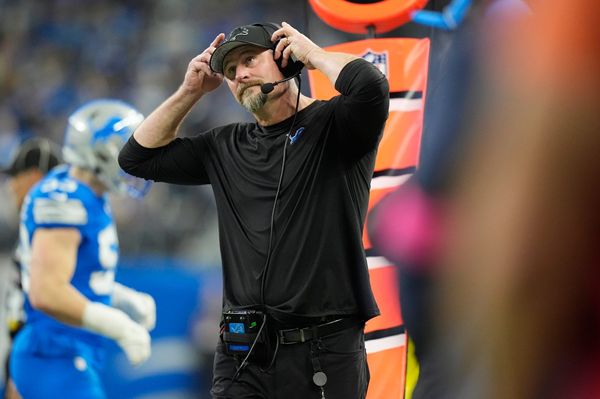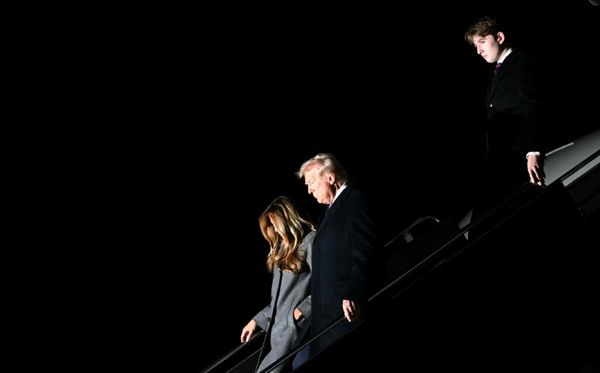
Australia’s job creation machine is firmly set on “high” — even the naysayers can’t find the off switch. On Thursday, the Australian Bureau of Statistics (ABS) released October’s employment figures: 55,000 more people found work, more than double the forecasts.
There was still a slight increase in the number of jobless, as many of the newly created roles were filled by people — predominantly women rejoining the workforce — who previously weren’t counted as seeking work. Nonetheless, the labour market remains historically hot.
Importantly, real wages grew for the first time since inflation took off, thanks to both increasing pay and falling inflation. All those extra opportunities are giving employees leverage to tell their bosses to shove it, and it’s slowly humbling employers on payday.
With such a buoyant jobs market, one would think Prime Minister Anthony Albanese would be riding high, especially considering the road ahead is looking rosier by the day. The Reserve Bank now forecasts continued growth through to 2025.
Yet new polling last week showed voters are increasingly gloomy about their economic outlook, and it has made a minor dent in Albanese’s approval, the first sizeable drop of his term. Why the disconnect?
Echoes of Biden bashing
Perhaps Albanese should’ve asked US President Joe Biden about that when he visited Washington last month. Biden has delivered an even hotter labour market, putting the highest proportion of working-age Americans to work since 2008. And US wages have been rising faster than inflation for eight months. Yet he’s been rewarded with merciless blows to his polling on “economic management”.
Why? It’s partly a layover effect — it takes a while of real wage growth for people to stop getting sticker shock and start feeling better off. But it’s also partly because full employment delivers its initial benefits to a cohort who aren’t particularly vocal on Twitter and don’t command much attention from the media: lower-paid workers.
In the Biden boom, lower-income American workers have recovered approximately a quarter of the increase in wage inequality they suffered between Ronald Reagan and Donald Trump’s presidencies. This is largely thanks to growing opportunities for “low-skilled” positions — real wages are above pre-COVID levels for people without a degree, but below for people with one.
This is hugely beneficial for economic equality. The benefits will also be likely to ripple outwards over time. But now, as New York magazine’s Eric Levitz writes: “The biggest beneficiaries of Biden-era job growth comprise a small fraction of the public, whereas all Americans are directly impacted by consumer prices.”
‘No experience required’
Back in Australia, research by Seek economist Matt Cowgill shows the biggest beneficiaries of our tight jobs market are also those in “low-skilled” or entry-level positions, and those in lower-paid sectors: “Job ads [on Seek] rose for occupations at all salary levels during the ‘jobs boom’ period — but they rose most of all for the lowest paid bracket of occupations.”
When they have to compete for applicants, employers get less picky. The number of job ads on Seek that said no experience was necessary jumped from 1.1% pre-COVID to 1.9% in November 2022. The unemployment rate for workers without a post-school qualification thus fell by more than for those with degrees.
These favourable conditions surged through early 2022, peaked in late 2022 and have stabilised since. Thus Morrison government treasurer Josh Frydenberg’s belated, lukewarm Keynesian conversion helped. But Labor can hang its hat on two particular wins for low-paid workers, which it supported: the minimum wage rising 5.75%; and aged care workers’ pay rising 15%.
However, the media devoted far less air time to our ascendant proletarians compared with sympathetic odes to the plights of mortgage holders and — lord, spare me — landlords. Australia has achieved its lowest unemployment rates in half a century and it’s delivering for the worst-off workers. Yet, bafflingly, few people seem excited.
A cool wind blowing?
There are, of course, disadvantaged people who aren’t benefiting from the status quo — those on welfare, many of whose working capacity is limited. Both Biden and former PM Scott Morrison raised welfare substantially during the pandemic, but an obstinate Congress, a “snapback” Coalition and a tepid Labor Party have allowed rates to slide amid rising prices.
But this labourist myopia is still far superior to the artificial paucity of job opportunities pre-COVID. And our failure to sing the praises of full employment risks sending the wrong message to Canberra — that no-one really cares, so they need not either.
One can see such deprioritisation creeping in. Economist John Quiggin argues that while Labor is still formally committed to maintaining full employment, this year’s budget projected an increase in unemployment to 4.5% (up from 3.7% now). When given the chance to lock in an ambitious unemployment target in his “employment white paper”, Treasurer Jim Chalmers squibbed it. Meanwhile, the Coalition has shed its expansionary dalliance and is preaching restraint.
As the political class’ enthusiasm wanes, dark clouds are gathering. Seek’s “no experience necessary” ads have slipped back down to 1.65% — still better than before COVID, but not as high as last year. And buried amid the positive ABS numbers is a sharp increase in unemployment among gen Zers, which economists say is a “canary-in-the-coal mine” warning that the jobs market is souring. Higher unemployment among young people has preceded previous downturns.
For years, politicians have emptily promised to “create jobs”. It’s about time they actually meant it — and it’s about time we, the public, made them deliver.
Should the media be giving Labor more credit for its pretty impressive job creation progress? Let us know by writing to letters@crikey.com.au. Please include your full name to be considered for publication. We reserve the right to edit for length and clarity.







